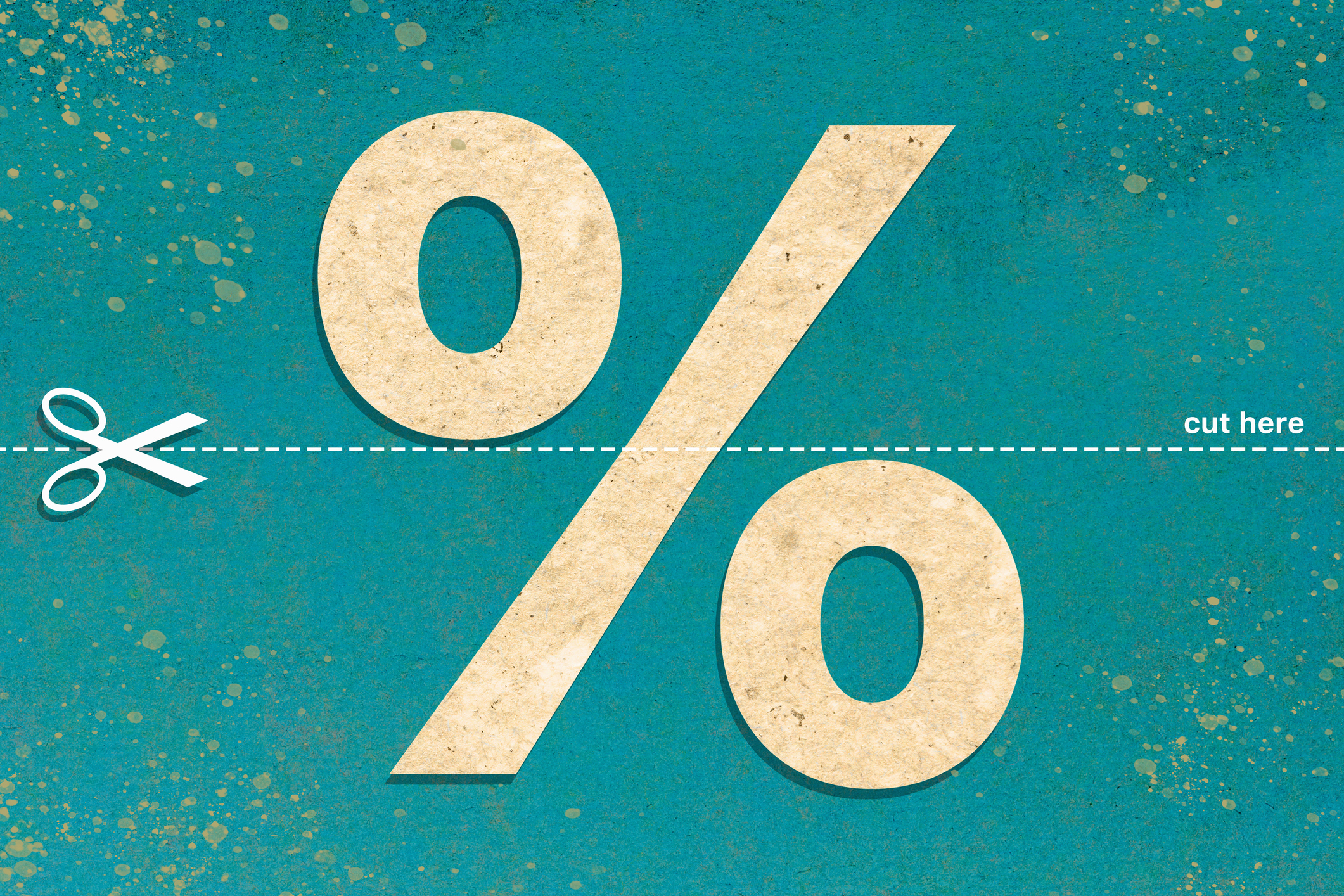Big Changes Are Ahead for Higher Ed
A major reform of higher ed is underway. Colleges are bracing for abrupt change, financial headwinds and uncertainty.

To help you understand what is going on in education, our highly experienced Kiplinger Letter team will keep you abreast of the latest developments and forecasts (Get a free issue of The Kiplinger Letter or subscribe). You'll get all the latest news first by subscribing, but we publish many (but not all) of our forecasts a few days afterward online. Here’s the latest...
The Kiplinger Letter has been running since 1923 and is a collection of concise weekly forecasts on business and economic trends, to help you understand what’s coming up to make the most of your investments and your money. Subscribe to The Kiplinger Letter.
Congress just passed the biggest higher education policy update in two decades. The Republicans’ recent tax and spending law includes new caps on federal loans, new repayment plans and a sweeping accountability system. With most rules set to take effect next July, the Education Department and colleges need to act fast.
To try to lower college prices and student debt, an overhaul of federal student loans is coming. Federal student debt stands at $1.7 trillion, affecting about 43 million borrowers. Half of the debt comes from graduate loans, a big target of the law. Under the new policy, graduate students and parents of undergrads face new caps on yearly and total borrowing. (Limits on loans made directly to undergrads are unchanged.) A simplified loan repayment plan is on tap, which will reap about $270 billion in federal savings over a decade. Two repayment plans, a standard one with fixed payments and a new income-driven plan, spell higher monthly payments for many borrowers.
From just $107.88 $24.99 for Kiplinger Personal Finance
Become a smarter, better informed investor. Subscribe from just $107.88 $24.99, plus get up to 4 Special Issues

Sign up for Kiplinger’s Free Newsletters
Profit and prosper with the best of expert advice on investing, taxes, retirement, personal finance and more - straight to your e-mail.
Profit and prosper with the best of expert advice - straight to your e-mail.
The new accountability system marks a huge shift. Schools will lose access to federal lending if graduates don’t earn more than nonattendees in the state. Advocates of the system say the goal is to push high-cost programs to reduce their prices. Undergrads will be measured against those with high school diplomas. Grad programs get measured against similarly situated adults without a graduate degree. 20% or more of associate degrees fail this test, per an analysis by Preston Cooper, senior fellow at the American Enterprise Institute. That failure rate comes with a caveat: “Students in these programs are less likely to use loans to begin with,” writes Cooper. “Many will be able to continue operating even if they lose loan access.” Around 8% of all master’s degree programs fail the test (the failure rate is higher for master’s degrees at for-profits). But just 3% of bachelor’s degrees fail.
Among the other policy changes: A bigger endowment tax on wealthy schools of up to 8%, up from today’s top rate of 1.4%. Small colleges with fewer than 3,000 students are exempt, however. And Pell Grants are now available for very short work programs of eight to 15 weeks, a big win for community colleges. Pells also received an extra $10.5 billion in funding.
Schools are racing to adapt and alert students about financial aid changes, though much uncertainty remains. Revenue could take a hit if fewer students enroll, especially at schools that rely heavily on grad programs. Some programs will shrink or be cut, as schools at least consider lowering tuition in some cases.
Expect more business for private lenders, such as College Ave, SoFi, Sallie Mae and Ascent. For example, 40% of medical students borrow more than the law’s annual loan limit. Private loans make up 8% of overall student debt and that figure is sure to increase.
Delays are likely as the Education Department faces implementation struggles. The agency has cut half of its workforce so far and has a lengthy, complex to-do list with tight deadlines. Passing the bill is “just the tip of the iceberg,” says Sarah Sattelmeyer, an education policy analyst at New America. “An incredible amount of work is coming at the Education Department.” This includes issuing reams of rules and guidance about loans, starting the new accountability system, policing lending violations and much more.
Meanwhile, the Trump administration will continue to pressure institutions to change policies, including by withholding current or future federal research funds. Expect more investigations of antisemitism, diversity, foreign students and other issues.
All this change comes as schools face other financial headwinds. A sharp decline in foreign enrollment looms ahead. There’s a homegrown demographic challenge, as the college-age population shrinks in the coming years. Higher costs of everything from construction to insurance are stressing budgets. These trends, and the new policies, mean more schools will mull budget cuts, while also considering sharing resources with other schools or even mergers.
Related Content
Profit and prosper with the best of Kiplinger's advice on investing, taxes, retirement, personal finance and much more. Delivered daily. Enter your email in the box and click Sign Me Up.

John Miley is a Senior Associate Editor at The Kiplinger Letter. He mainly covers AI, technology, telecom and education, but will jump on other business topics as needed. In his role, he provides timely forecasts about emerging technologies, business trends and government regulations. He also edits stories for the weekly publication and has written and edited email newsletters.
He holds a BA from Bates College and a master’s degree in magazine journalism from Northwestern University, where he specialized in business reporting. An avid runner and a former decathlete, he has written about fitness and competed in triathlons.
-
 Holiday Tax Scams: 'Tis the Season to be Wary
Holiday Tax Scams: 'Tis the Season to be WaryTax Scams Navigating tax tricks of the holiday season may be daunting, but don't let that destroy your festive spirit
-
 Metro by T-Mobile Is Giving Away This Samsung Galaxy A16: Which Plans Are Eligible?
Metro by T-Mobile Is Giving Away This Samsung Galaxy A16: Which Plans Are Eligible?Metro by T-Mobile is offering free Samsung Galaxy A16 phones on eligible plans right now. Here’s how the deal works.
-
 I Drive and Collect Classic Cars: Here’s How I Got Started
I Drive and Collect Classic Cars: Here’s How I Got StartedAre classic cars a hobby or an investment strategy — or both? Either way, the vintage car scene is much cooler and more affordable than you think.
-
 Disney’s Risky Acceptance of AI Videos
Disney’s Risky Acceptance of AI VideosThe Kiplinger Letter Disney will let fans run wild with AI-generated videos of its top characters. The move highlights the uneasy partnership between AI companies and Hollywood.
-
 4 Great Tools to DIY Your Own Financial Plan
4 Great Tools to DIY Your Own Financial PlanSmart Savings Several tools picked out by Kiplinger that DIYers can use to make their own financial plan.
-
 AI Appliances Aren’t Exciting Buyers…Yet
AI Appliances Aren’t Exciting Buyers…YetThe Kiplinger Letter Artificial intelligence is being embedded into all sorts of appliances. Now sellers need to get customers to care about AI-powered laundry.
-
 What to Expect from the Global Economy in 2026
What to Expect from the Global Economy in 2026The Kiplinger Letter Economic growth across the globe will be highly uneven, with some major economies accelerating while others hit the brakes.
-
 21 Money Moves Smart People Are Making Before 2026
21 Money Moves Smart People Are Making Before 2026These steps can help trim your tax bill, boost your savings, lower your health care costs and set you up for financial success in 2026.
-
 Giving Tuesday 2025: 'Every Small Act Makes a Major Difference'
Giving Tuesday 2025: 'Every Small Act Makes a Major Difference'GivingTuesday encourages generosity in any form, from donating to charity to helping your neighbors.
-
 How to Position Your Portfolio for Lower Interest Rates
How to Position Your Portfolio for Lower Interest RatesThe Federal Reserve is far from done with its rate-cutting regime. This is how investors can prepare.
-
 Moves to Manage the Soaring Costs of Owning a Car
Moves to Manage the Soaring Costs of Owning a CarIt's costing more and more to keep a car on the road, but you can drive some costs down. Here's how to get a better deal on insurance premiums, repairs and gas